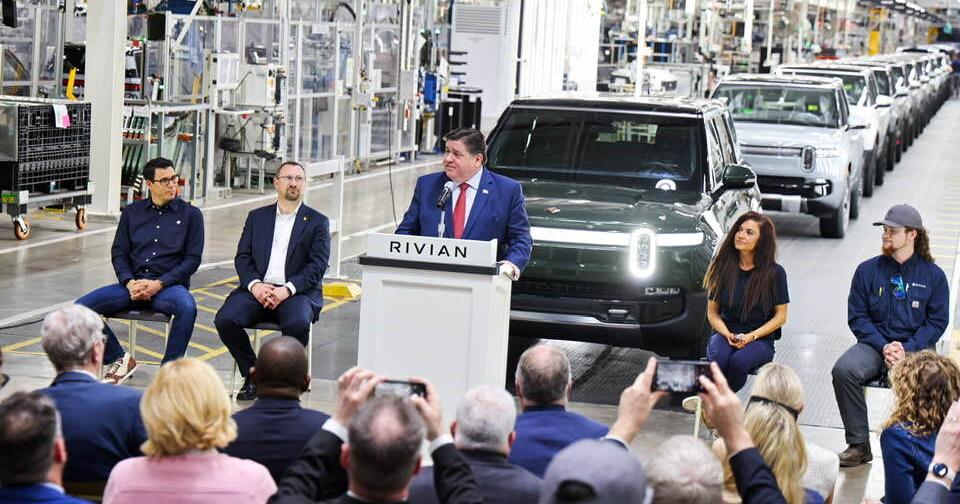(The Center Square) – Between 2022 and 2024, Rivian filed over 2,000 H-1B and 400 green card applications while receiving significant Illinois state incentives. A researcher says this raises concerns about replacing American workers and the use of taxpayer dollars.
According to MyVisaJobs, a site where immigrants explore U.S. work visa opportunities, 89 Rivian positions are listed in Normal, many in common tech roles like software developers and product managers.
“If Rivian said, ‘these 25 engineers are the best in the world, and only they can design this specific part of the truck,’ that would make sense under the H-1B program. But that’s clearly not what’s happening at this scale,” said Simon Hankinson, a senior researcher at The Heritage Foundation. “The same goes for Microsoft—filing over 6,000 petitions isn’t about unique talent, it’s mass labor recruitment and replacement.”
The 2,000 H-1B and 400 green card applications filed do not necessarily reflect the actual number of foreign workers hired, as some visa requests may be denied. Additionally, workers renewing, transferring or changing locations often require new labor condition applications.
Hankinson’s research shows most H-1B positions pay below the median wage, with only one in six reaching the top wage tier.
“This program was created 30 years ago to bring in a limited number of specialty workers during shortages,” said Hankinson. “Now it’s being used as a cheap labor pipeline to replace American workers.”
Hankinson said recent U.S. graduates are often undercut in the job market, despite investing heavily in their education.
Rivian’s 30-year Illinois incentive deal totals $827 million, including $634 million in Reimagine Electric Vehicles in Illinois tax credits tied to retaining at least 6,000 jobs.
Rivian and the Illinois Department of Commerce and Economic Opportunity did not respond to The Center Square’s requests for comment.
In a state home to multiple top-tier engineering and tech institutions like the University of Illinois, observers ask why more homegrown talent isn’t being hired for these roles.
Hankinson argued part of the problem is structural. He pointed to Illinois’ falling test scores and schools failing to prepare students for science, technology, engineering and math careers. Still, he noted plenty of qualified grads are ready to work if the pay is fair.
“If you have to borrow $150,000 for your BA, MA or even a PhD, you need to be sure you can pay that loan off,” Hankinson explained. “If the labor market worked properly and didn’t rely on foreign workers, starting salaries for tech engineers or software designers would rise enough to cover those loans.”
Hankinson cited an example from Microsoft, which laid off over 2,300 workers between May and June in Washington—including 817 software engineers—while simultaneously filing more than 6,000 H-1B petitions for similar roles.
“For taxpayers, why should they be subsidizing other people’s jobs?” Hankinson asked. “They should be supporting jobs for their own state, their own kids, and local growth. All that information should be transparent so policymakers know where the money is going. Ultimately, the system should be designed to benefit the United States.”
Hankinson and others are calling for common-sense reforms: requiring companies to disclose workforce composition when receiving public funds, ending below-market wages for visa holders and restructuring the visa process to prioritize truly high-skilled workers.


